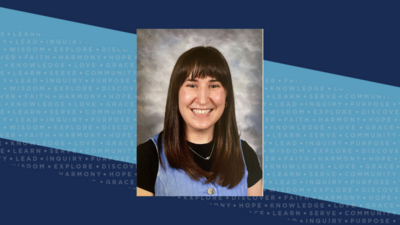How To Perform a Literacy Assessment: Increasing a Student's Literacy Process

Literacy assessments help teachers like you identify students’ literacy progress and understand how to best support them. Although the word “assessment” may bring to mind the high-stakes tests that legislators love, students dread, and teachers loathe, but literacy assessment is a much broader concept. In “Assessment Literacy in a Standards-Based Urban Education Setting,” Norman Webb stated, “Assessment Literacy is defined as the knowledge of the means for assessing what students know and can do, the interpretation of the results from these assessments, and application of assessment results to improve student learning and program effectiveness.”
How to Perform a Literacy Assessment
Literacy assessments are resources you can use to determine what your students can and cannot control in their literacy processing system. Like any assessment, its purpose is to improve student learning.
Traditionally, the term literacy referred to one’s ability to read and write, but more recently, it has been reinterpreted to include listening, viewing, speaking and performing along with cultural and social factors affecting those abilities. The first step toward teaching literacy is conducting an assessment, but your end game remains focused on student literacy processing and student achievement. As a teacher, starting with a literacy assessment will help you determine the type of tools needed to support each individual student’s literacy processing system.
First, determine what kind of literacy assessment the student or class needs. According to Kristen Munger at Lumen Learning, “Literacy assessments can be informal or formal, formative or summative, screenings or diagnostic tests. They can provide data at single points in time or to monitor progress over time.”
There are different types of literacy assessments, but the best ones are those you can conduct one-on-one with the individual student. In a whole group setting, you could give out a dictated sentence and see which sounds the children can record in words. It might go like this: “The boy has a big dog,” you read aloud, “and he will take her to school.” The students write down the sounds in the words even if they do not know how to spell them correctly. You would then collect their sentences and analyze them for specific strengths and needs. That’s just one example of a whole-group phonics test.
In a one-on-one setting, however, you could perform a running record. In this assessment, the student reads aloud while you record the errors and self-corrects. Then, you can analyze the record for accuracy, fluency and comprehension
Whatever type of literacy assessment you choose, the assessment must be valid and reliable. Everything in literacy education from strategies to assessments needs to be based in research.
Tips and Strategies to Improve Student Reading
The number one way to improve student reading is to increase classroom time spent on independent reading.
Jennifer Saravello is the author of “The Reading Strategies Book” and a noted expert in literacy education. She said, “I also regard independent reading time as an important instructional time where I’m conferring with students, helping them to select goals and equipping them with strategies to support them with their goals, while students who aren’t meeting with me are independently practicing.”
As obvious as it sounds, reading is the most effective way to improve as a reader. Nothing can take the place of children consuming enormous amounts of developmentally appropriate books to improve their reading skills. As a teacher, you need to provide students with at least 20 minutes of undirected, uninterrupted reading time every day. It’s not enough to assign this time as homework since no teacher can control what happens at home. Teachers like you are often tasked with so many other requirements in the curriculum that finding time for independent reading can be difficult. Even when it is labeled as reading education, however, extensive activity can derail literacy education by reducing independent reading time.
The other key component to literacy education is writing. Students need to use their physical bodies to write – with a pencil, not a keyboard. The more you write, the better you read. Richard L. Allington, an education scholar and researcher at the University of Tennessee at Knoxville, wrote:
We studied teachers found to be particularly effective in developing reading and writing proficiency. These teachers had a “reading and writing vs. stuff” ratio that was far better balanced than is typically found in elementary classrooms. (They) routinely had children actually reading and writing for as much a half of the school day – often around a 50/50 ratio of reading and writing to stuff (stuff is all the other things teachers have children do instead of reading and writing).
Both independent reading and writing fall under the umbrella of guided reading. Traditionally, guided reading involves homogeneously matched small groups reading the same texts. Today, it also focuses on the strategies that students need to improve as readers, such as decoding, comprehension, fluency and writing.
Different Types of Literacy Assessments
You as the teacher need to be able choose the right assessment for your students, your classroom and what you need to know to advance student learning. Assessment types include:
Running Records
In a running record, you record all behaviors that give insight into a child’s thinking processes. The experts at Scholastic define running records this way: “Running Records capture what children know and understand about the reading process. They capture children’s thinking. Running Records provide you with an opportunity to analyze what happened and plan appropriate instruction.”
Curriculum-Based Measurement (CBM)
Using CBM, which directly and repeatedly assesses targeted skills or content, you can identify your students’ abilities in reading fluency, comprehension, and reading words per minute (RWM). CBM is also a good strategy to determine how many words a student has in their writing vocabulary.
Concepts of Print (CAP)
CAP is simply the basic knowledge about how books and print work, including ideas such as reading from left to right and top to bottom, using the “return sweep,” that letters and words convey ideas, and that illustrations correspond to those same ideas. You can assess CAP using informal assessments. (Reading Rockets has great resources!) Or you can use a formal assessment such as the MLPP, which is a standardized CAP assessment developed and used in Michigan.
Why Literacy Assessments Are Important
Literacy assessments tell you what the student can and cannot control in reading and writing. If you do not know what the child can control, then you don’t know how to take that student from his or her current reading level to the next one. It’s like parents who buy a new pair of shoes for their child based on the size worn last year. They don’t realize the kid’s feet have grown two sizes since the last visit to the shoe store unless they measure. Likewise, teachers can’t take students to the next level in literacy if they don’t know where those students are right now.
While assessment generally is important, choosing the right literacy assessment strategies is no less critical. Peter-Sam Hill, an education consultant at Oxford Policy Management, said, “Both reading words correctly and understanding the words read should be central to what is assessed. Together, these skills assess reading with meaning.”
While all elementary teachers conduct reading assessments, literacy specialists need extensive knowledge in the subject. Reading and literacy specialists can work with students individually, in small groups or in entire classrooms. They may also coach other faculty members in research-based models of reading instruction along with serving as on-site experts. Learn more about getting started as a reading specialist by earning a reading specialist endorsement or a master’s degree at Concordia University, Nebraska.
Our reading specialist endorsement reaches every subject area because all areas involve reading. The courses are designed to include assignments with practical applications and strategies that you can take directly into your classroom. Whether or not you want to become a reading specialist, this endorsement can help teachers better serve their students’ needs.
The NCATE-accredited online master’s degree in literacy program offers you the broad-based knowledge and practical, hands-on skills to successfully lead fully inclusive K-12 classrooms. Study in a curriculum created by experienced special education practitioners and apply these methods directly in your classroom. You can gain the tools, skills and knowledge to create effective differentiated instructional strategies for your students.


